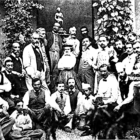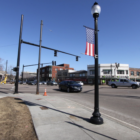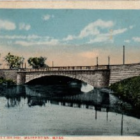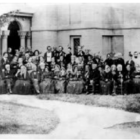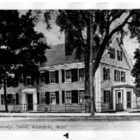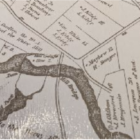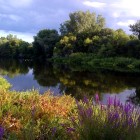Around Town
Our History: Watertown — How it Grew!
|
Harriet Hosmer (1830 – 1908) surrounded by workmen in her Rome studio
The following article is part of a series on local history provided by the Historical Society of Watertown. It was written by Sigrid Reddy Watson for a 1994 program at the library and printed in the June 1995 Historical Society newsletter, “The Town Crier”. Sigrid is a former Board member and former President of the Historical Society, as well at a former Director of the Watertown Free Public Library. For several years starting in 1997, she wrote a Watertown history column for the Watertown TAB/Press called “Echoes.” On November 16, 1994 a joint meeting between the Friends of the Library and the Historical Society of Watertown was conducted in the Pratt room of the Free Public Library.
